 History
History  History
History  Movies and TV
Movies and TV 10 Practical Movie Monsters Remade with CGI
 Politics
Politics 10 U.S. Presidents Who Cheated on Their Wives
 Humans
Humans The 20th Century’s 10 Most Famous Centenarians
 History
History 10 Influencers Who Lived Centuries before Social Media
 Miscellaneous
Miscellaneous 10 Ancient Etiquette Rules You Never Knew Existed
 Our World
Our World Planet Earth’s 10 Most Hardcore Natural Creations
 Movies and TV
Movies and TV 10 Times Twin Movies Competed with Each Other
 The Arts
The Arts 10 Masterpieces Plucked from the Artist’s Subconscious
 Crime
Crime 10 Fascinating Facts about Rikers Island
 History
History 10 Shocking Roman Assassinations That Inspired the Ides of March
 Movies and TV
Movies and TV 10 Practical Movie Monsters Remade with CGI
 Politics
Politics 10 U.S. Presidents Who Cheated on Their Wives
Who's Behind Listverse?

Jamie Frater
Head Editor
Jamie founded Listverse due to an insatiable desire to share fascinating, obscure, and bizarre facts. He has been a guest speaker on numerous national radio and television stations and is a five time published author.
More About Us Humans
Humans The 20th Century’s 10 Most Famous Centenarians
 History
History 10 Influencers Who Lived Centuries before Social Media
 Miscellaneous
Miscellaneous 10 Ancient Etiquette Rules You Never Knew Existed
 Our World
Our World Planet Earth’s 10 Most Hardcore Natural Creations
 Movies and TV
Movies and TV 10 Times Twin Movies Competed with Each Other
 The Arts
The Arts 10 Masterpieces Plucked from the Artist’s Subconscious
 Crime
Crime 10 Fascinating Facts about Rikers Island
10 Conspiracy Theories About The European Union
The most-enduring conspiracy theories tend to be those that focus on a powerful elite pulling the puppet strings of the world to manipulate it to their liking. For an entity as powerful as the European Union, it is pretty much inevitable that such theories will form. From military might and monetary policy, to language and culture, the EU oversees almost every aspect of European life and, depending on what you believe, they know exactly what they’re doing.
See Also: Top 10 Reasons The European Union Is Doomed
10 The Kalergi Plan
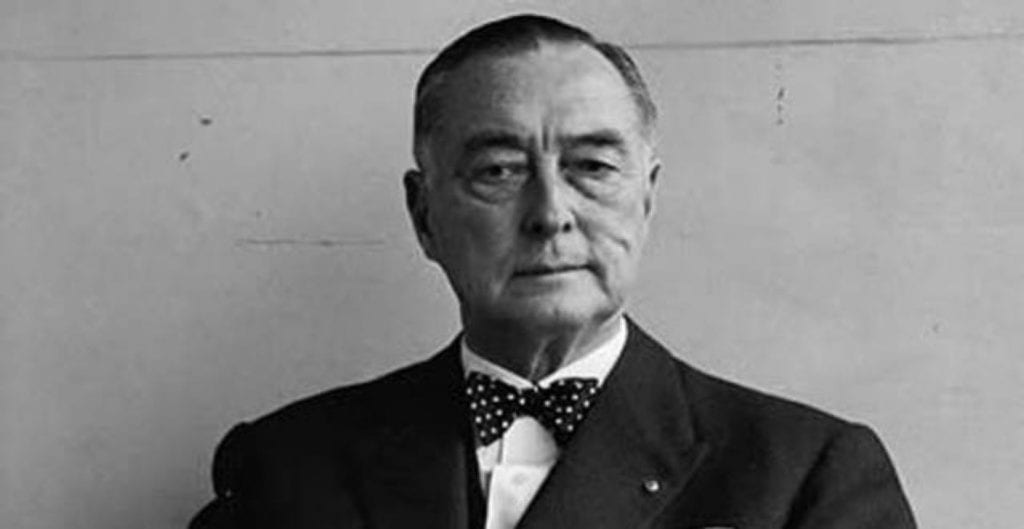
Also known as the Coudenhove-Kalergi Plan, this theory is based on the work of Richard von Coudenhove-Kalergi, an Austrian-Japanese politician who also had Checkoslovakian and French citizenship. This diverse background, along with living through two world wars, undoubtedly helped shape the political opinions that have made him such a large figure in conspiracy circles.
Kalergi’s “plan” is really the views he expressed in several books, where he states he believes the world will move towards continental-based federations, where Europe would function as one entity, the Americas another, and so on. He also believed that, as “space, time, and prejudice” disappeared, humanity would evolve into a single race.
As you can imagine, this has been seized upon as proof that European elites are trying to wipe out European cultures and ethnicities. Although most theorists have no issue referring to the Kalergi plan directly, it has also been repackaged as Le Grand Replacement, and as a plan for EU officials to use the current migrant crisis to create an Arab Europe—Eurabia.
9 New World Order
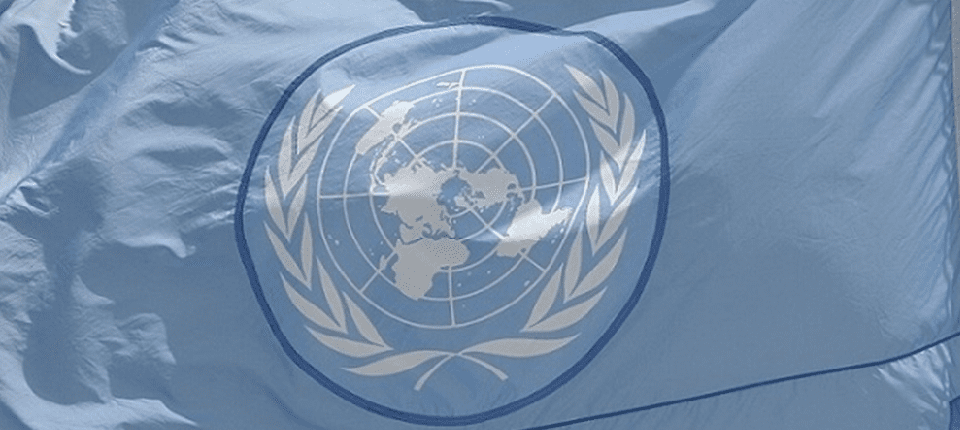
Another reason certain conspiracy theories persist longer than others is that they are more adaptable. For example, it’s easy to convince people that something new being added to your water is bad, but when people have been drinking fluoride their whole lives, they’re not as scared of it. But theories about people having ulterior motives to seize control will always be relevant, which makes it easy to apply theories about a New World Order to anyone.
Although he was far from the first to do so, leading Brexiteer Nigel Farage came under fire for applying that theory to the EU in an interview, when he asked “what percentage of the UK actually believe in the United States of Europe, actually believe in this New World Order?”. Along with the Kalergi plan, the theory of the New World Order has long been associated with anti-semitism, so it didn’t help when he described Jewish billionaire George Soros as “the biggest threat to the entire Western World”, or said that banks like Goldman-Sachs want to “take down our democratic systems” and see the EU as “the forerunner of global government”. The difficulty with theories such a this is that, unlike the effects of fluoride on the human mind, it is impossible to definitively prove that people are not conspiring together, meaning the theory is free to continue ad nauseum.
8 No Scots Allowed

Most people are probably aware of the parallel pushes for independence in both Scotland and Catalonia, the key difference being that the Scottish lost a legally binding referendum, while the Catalonians won an illegitimate one. Since then, Catalonian leaders have been arrested, while Scottish leaders have called for a second referendum, due to the fact that they are being taken out of the EU, despite 62% voting to stay.
While there is no precedent for a part of the EU declaring independence from an EU member state, the general consensus is that any newly formed states would have to reapply for membership, and this is where the conspiracy comes in. Since all EU member states have to approve any new additions unanimously, it is easy to prevent any nation from joining. So if Scotland declared independence, Spain would want to keep it out of the EU, so that Catalonians would be too fearful to declare independence for themselves, as Spain could just veto them too. Obviously, the existence of that threat also serves to deter Scotland from declaring independence in the first place.
Instinctively, most Spanish politicians will oppose Catalonian independence; not many people sit around hoping part of their country breaks away. But Spanish government policy has always been that it will not veto Scottish independence or EU membership. In reality, having Catalonia as a non-EU country right on their doorstep would be terrible for Spain, and the EU, not to mention that most people on both sides would expect free movement. Similarly, the EU would rather work with Scotland than against it, and would probably even use Scotland to show the rest of the UK “what it’s missing” by not being a member. So although the threat of a Spanish veto is a very effective talking point, it will never be much of a walking point.
If you think that’s just wishful thinking, remember that Spain was willing to veto any Brexit deal that cut them off from Gibraltar. Even though a hard border in Gibraltar would have no effect on the Spanish economy, but would devastate Gibraltar and make it more likely to rejoin Spain, they still wanted access. So if the Spanish government was willing to fight for 300,000 Brits, they’ll fight for 7.5 million Catalonians and 5.4 million Scots.
7EU Army

In the lead up to the Brexit vote in 2016, there was much discussion about the creation of an EU army, one that would see EU citizens aged 16-25 conscripted for service. Additionally, there were fears that state militaries could be deployed on behalf of the EU, without the government of that member state having the final say. And that’s where the theory falls down.
Like most big decisions in the EU, defence policy is decided on a unanimous basis, which means that any member state has the power to completely prevent an EU army. Even if national leaders wanted to hand away their military authority, it is so easy to stop a policy like this in its tracks that it is unlikely to be tabled at all. Instead, what we see are policies that promote greater cooperation in order to streamline EU defense and save costs, such as PESCO (Permanent Structured Cooperation). This opt-in policy has been taken up by 25 out of 28 member states, and involves projects like building shared hubs, and establishing a single cybersecurity network.
The only time an EU member state’s army is obliged to be deployed is if there is an attack on the soil of another EU member state, in which case the rest of the EU must come to its defence.
6 Aachen Conspiracy
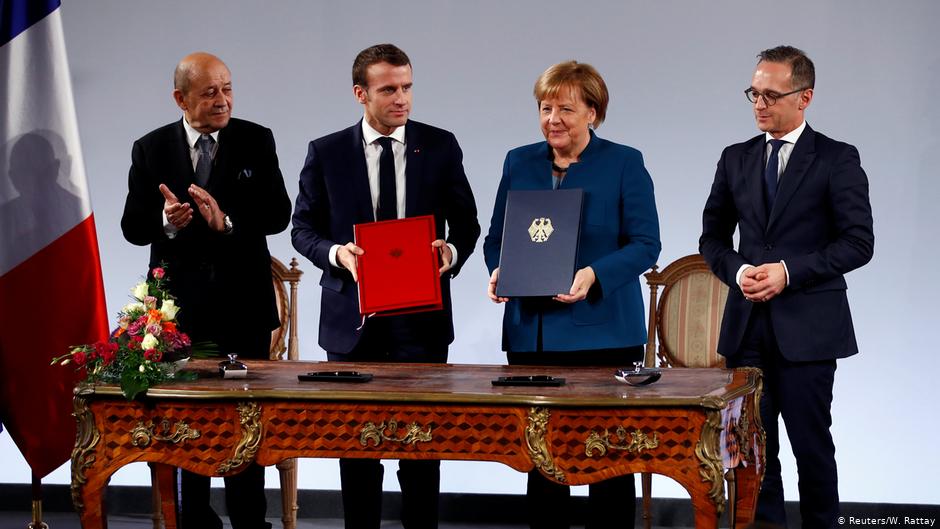
On January 22 1963, French President Charles de Gaulle and German Chancellor Konrad Adenauer signed the Elysee Treaty on behalf of their two nations. The treaty was designed to promote cooperation, rather than rivalry, between Europe’s two biggest economies. The actual text of the treaty itself is quite sparse, essentially stipulating that leaders of both countries should meet regularly, coordinate on foreign policy, and promote each others’ cultures.
On January 22 2019, 55 years after the treaty was first signed, French President Emmanuel Macron and German Chancellor Angela Merkel met in the German city of Aachen to sign an updated version. In the lead up to this, Eurosceptics like former Presidential candidate Marine LePen used the summit to push what has become known as the Aachen Conspiracy.
One of the main claims was that France would share its seat on the UN Security Council with Germany, as France is a permanent member while Germany is not. Obviously, that’s not how the UN actually works, and France can’t just “share” its seat with another country (plus, Germany has a temporary seat now anyway). But the conspiracy plays into historical French fears of a “German-occupied France”, harking back to the days when the Nazis had taken over. Theorists also claimed that President Macron was about to cede control of Alsace-Lorraine, a sizeable chunk of land between France and Germany, with almost 2 million inhabitants. The area was originally ceded from France to Germany in 1871, then back to France in 1919, then Germany in 1940, and then France in 1945. Currently, it is primarily German-speaking, but with the Aachen summit having come and gone, it seems Germany will have to wait at least a few more years before it’s their turn again.
5 Trump’s Theory

It wouldn’t be much of a list of conspiracy theories without a mention of everybody’s favourite current President of the United States, Donald Trump. From Birtherism to 9/11, Trump has long been associated with conspiracy theories. Usually, these are established theories that he hears and repeats, but occasionally, he floats his own original ideas, such as the EU being set up as a way to take advantage of the US.
Trump first made these claims on the Fox Business show “Mornings with Maria”, in which he stated that Europe was treating the US even worse than China, and that “European nations were set up in order to take advantage of the United States”. Obviously, most European countries are much older than the US, but Trump clarified his theory at a rally a few days later when he said that it was the European Union, not nations, that was set up to take advantage of the US, stating “We love the countries of the European Union. But the European Union, of course, was set up to take advantage of the United States”. Although it is true that the US runs a trade deficit with the EU, the original intention for the establishment of a European community was to stop European countries bombing each other, a tactic that has proven quite successful. While a trade surplus with the US certainly adds to the economic advantages of not being blown up, it was far from the driving factor behind the formation of a coal and steel market 70 years ago.
4Rothschild Family

Since the Rothschild family allegedly owns so many banks and media outlets across the world, it is pretty easy to tie them into any conspiracy that involves either money or news. Theories involving the Rothschilds and their fortune famously go all the way back to the Napoleonic wars, and basically boil down to them using their influence to steer the world in the direction they want. According to the “mainstream” conspiracy theories, the Rothschilds aren’t literally choosing winners and losers, but can offer tremendous financial support to anything they approve of, while turning the media on anything they do not.
But according to some lesser-known theories, the family is doing a lot more than simply nudging things in the right direction; they are straight-up choosing who will lead what governments or international bodies. In France, President Emmanuel Macron is the subject of one such theory, based mainly on the fact that he spent four years working at Rothschild & Co. investment bank. Similarly, an Egyptian news anchor used a photo of a young Angela Merkel with two friends, allegedly future Prime Minister Theresa May and future CIA Director Gina Haspel, as evidence that the Rothschilds had been grooming these women for office their whole lives. Unsurprisingly, many of Europe’s top politicians have some link to the Rothschilds, making this a theory that will likely endure well into the future.
3 Eurozone Crisis
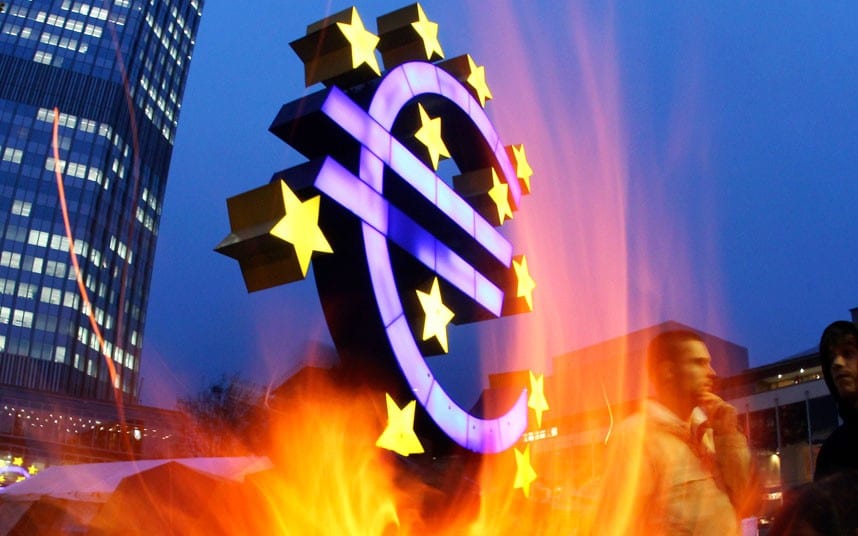
The Eurozone Crisis perfectly encapsulates the EU’s main hurdle of balancing integration with independence; intended to facilitate business and encourage cross-border movement, it was brought down by the lack of fiscal alignment across the market. But despite, or perhaps because of, the fact that the reasons for the Euro crash are quite boring and complex, several conspiracies have popped up claiming to know what really caused the crisis.
Two theories involve rich members of the British elite conspiring with the US media to affect investment, which have been floated by the likes of the then Prime Minister of Greece, as well as many high ranking officials in the Spanish government. One theory claims the British manipulated the Eurozone to both profit personally, and cover up their nation’s deficit. Another states the plan was to bring down the Euro to discourage future EU projects.
As you can tell, those theories sound like they originate from the pro-EU side, but there are those in Britain and beyond who believe the EU are to blame. These theories claim that the crisis was manufactured as a way to get countries like Greece under the EU’s thumb, as a way to dissolve all nations in the EU into one, and even as a way to introduce socialism to Europe (although the two have already met).
2 Esperanto
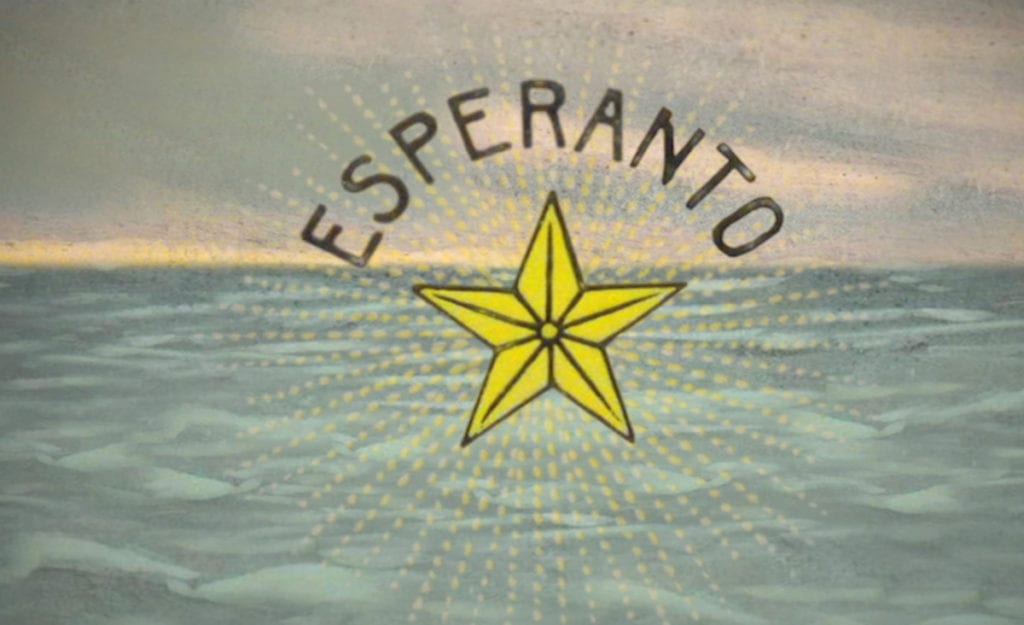
As you may already know, Esperanto is the most widely spoken auxiliary language in the world. Created by Ludwik Lejzer Zamenhof in 1887, Esperanto was made with elements from various languages, and was designed to be as easy to learn as possible. The hope was that, while it may never be anyone’s first language, it could bring the world together by being everyone’s second.
While many people loved the idea, immediately learning the language and publishing material, others were suspicious that Zamenhof had an ulterior motive. Since Zamenhof was Jewish, many claimed Esperanto was a Zionist attempt at world domination. Hitler himself even made reference to this theory in Mein Kampf. It’s hard to judge just how much of an impact this theory had on the spread and use of Esperanto, or whether a language with no native speakers would always have its limitations. All we do know is that whatever the plan was, it didn’t work.
1Finland?
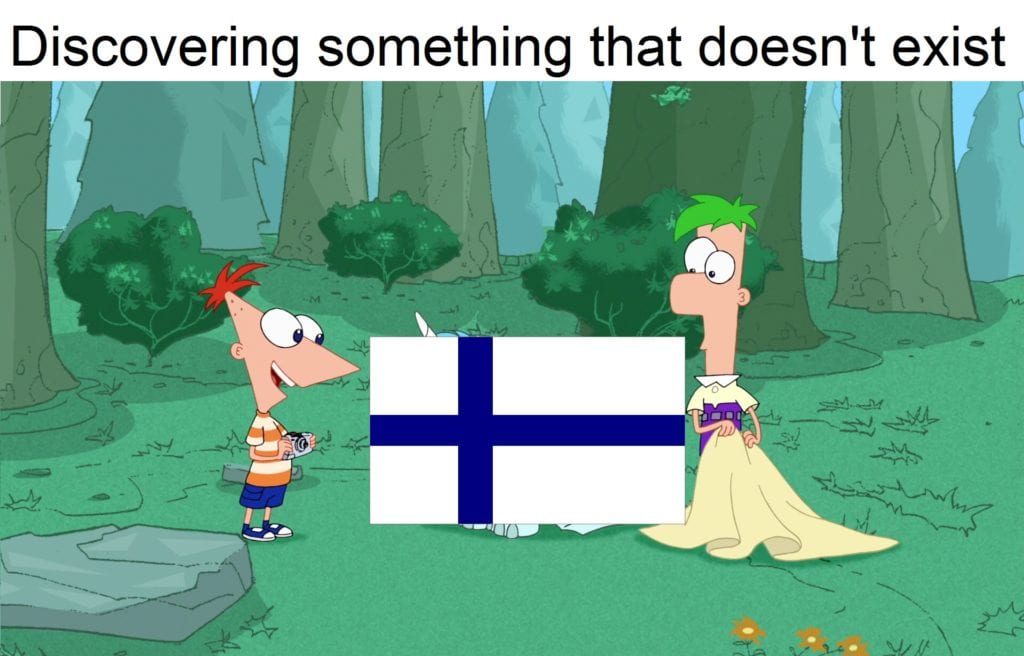
For most people, conspiracy theories are usually just a bit of fun. Not many people genuinely believe that the Earth is flat, or that the Queen is a shapeshifting lizard. They’re just not realistic theories, and believing them would require you to completely change how you view the laws of the universe. But every so often, a theory comes along that is so chilling plausible it makes you question everything you think you know. Such as the theory that Finland does not exist.
This theory claims that the concept of “Finland” arose from a joint Japanese-Soviet plot during the cold war. The two nations agreed to pretend that there was a country along the Baltic sea, so that they could claim fishing rights for the area. Using parts of Sweden, Estonia, and Russia, the Soviets tricked people into thinking they were living in Finland, and built the Trans-Siberian railway as a way to smuggle the fish to Japan. In exchange for their silence and a small cut of the catch, the Japanese could fish in “Finland” as much as they liked. Some may scoff at this theory and never give it a second thought, but maybe you should take a moment to ask yourself: how confident are you that Finland really exists?
For more lists like this, check out 10 Common Misconceptions About The European Union, and 10 European Countries That No Longer Exist.








